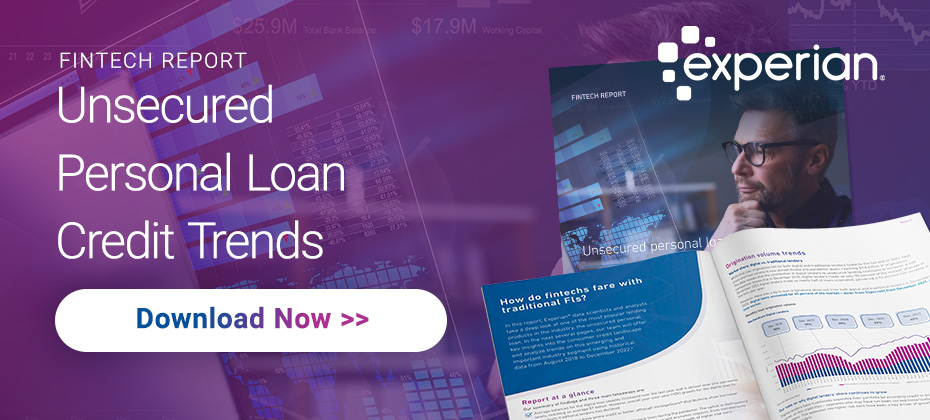Apply CIS Tag

As 2023 unfolds, rental housing owners and operators find themselves faced with a slightly different market than in the recent past. While rents are still high, rent growth has slowed somewhat, and the prospect of a cooler U.S. economy means more renters could be facing economic hardships in the months ahead. So, who is today's renter? In The State of the U.S. Rental Housing Market, a new report from Experian, we uncover that today’s renters are typically younger. According to our data derived from Experian RentBureau® and our analysis, 68.8% of today’s renters are either millennials (41.8%) or Gen Z (27%). Meanwhile, 17.3% are Gen X, 11.9% are baby boomers and only 2.2% are from the Silent Generation. Similarly, when you look at the renters who have a higher propensity to move — and thus need a new apartment or home to rent — they tend to skew younger. Our analysis shows that, of the renters who made two or more moves during the last two years, 43.2% were Gen Y (millennials). The younger Gen Y segment accounts for 25.2% of the frequent movers. As the population of renters has increased over the past decade, the concentration of growth appears to be among households earning $75,000 or more in annual income. About 7.6 million of these households were renters in 2009; by 10 years later, that figure had increased to 11.2 million. What is their financial status? Also, by some measurements, U.S. consumers — and, by extension, renters — improved their financial standing during the pandemic era. Credit scores rose as consumers used stimulus payments to pay down debt and save, but this trend is starting to normalize. The median conventional credit score rose above 700 in 2022, up from just above 680 in 2019. Still, according to Experian RentBureau, 63% of all renter households are low- to moderate-income earners, meaning they make less than 80% of the area median income. Furthermore, the average renter spends 38.6% of their income on rent. Households that spend more than 30% of their income on housing costs — including rent or mortgage payments, utilities and other fees — are considered “housing cost burdened” by the U.S. Department of Housing and Urban Development. For more insight and analysis of today’s rental-housing market, click here to download your free copy of The State of the U.S. Rental Housing Market report.

Trust is the primary factor in any business building a long-lasting relationship, especially when a company operates globally and wants to build a loyal customer base. With the rapid acceleration of digital shopping and transactions comes a growing fraud landscape. And, given the continual increase of people wanting to transact online, marketplace companies – from ecommerce apps, ridesharing, to rental companies – need to have ideal strategies in place to protect themselves and their customers from fraudulent activities. Without ideal risk mitigation or comprehensive fraud and identity proofing strategies, marketplaces may find themselves facing the following: Card-not-present (CNP) Fraud: As online shopping increases, customers can’t provide a credit card directly to the merchant. That’s why fraudsters can use stolen credit card information to make unauthorized transactions. And in most cases, card owners are unaware of being compromised. Without an integrated view of risk, existing credit card authentication services used in isolation can result in high false positives, friction and a lack of card issuer support. Unverified Consumer Members, Vendors, Hosts & Drivers: From digital marketplace merchants like Etsy and Amazon, to peer-to-peer sharing economies like AirBnB, Uber and Lyft, the marketplace ecosystem is prone to bad actors who use false ID techniques to exploit both the platform and consumers for monetary gain. Additionally, card transaction touchpoints across the customer lifecycle increases risks of credit card authentication. This can be at account opening, account management when changes to existing account information is necessary, or at checkout. Buy Now, Pay Later (BNPL) Muling: While a convenient way for consumers to plan for their purchases, experts warn that without cautionary and security measures, BNPL can be a target for digital fraud. Fraudsters may use their own or fabricated identities or leverage account takeover to gain access to a legitimate user’s account and payment information to make purchases with no intent to repay. This leaves the BNPL provider at the risk of unrecoverable monetary losses that can impact the business’ risk tolerance. Forged Listings & Fake Accounts: Unauthorized vendors that create a fake account using falsified identities, stolen credit cards and publish fake listings and product reviews are another threat faced by ecommerce marketplaces. These types of fraud can happen without the vast data sources necessary to assess the risk of a customer and authenticate credit cards among other fraud and identity verification solutions. By not focusing on establishing trust, fraud mitigation management solutions and identity proofing strategies, businesses can often find themselves with serious monetary, reputational, and security qualms. Interested in learning more? Download Experian’s Building Trust in Digital Marketplaces e-book and discover the strategies digital marketplaces, like the gig economy and peer-to-peer markets, can take to keep their users safe, and protected from fraudulent activity. For additional information on how Experian is helping businesses mitigate fraud, explore our comprehensive suite of identity and fraud solutions. Download e-book

After a period of historic, double-digit rent growth and razor-thin vacancy rates, the rental housing market has shown some signs of softening in recent months. And economic uncertainty still looms. The potential of a downturn this year and the existing economic strains faced by large swaths of renters may impact many rental-housing owners and managers nervous about their ability to find renters who can fulfill their lease terms. In The State of the U.S. Rental Housing Market, a new report from Experian, our data scientists and analysts offer key insights into the U.S. housing market and its impact on renters. The analysis in this report is derived from synthesizing various data samples and sources, including Experian credit attributes and models as well as data from the U.S. Census Bureau and Experian RentBureau®. Experian RentBureau is the largest rental payment database and contains over 4.4 million transactions and more than 25 million renter profiles. This report yields three major takeaways: Soaring interest rates and a slowing mortgage sector over the last year have taken heat out of the homebuying market, leading to more renters remaining in the renter pool. Inflation and other economic strains continue to squeeze renters’ finances. As rent prices increase and negative payment activity becomes more frequent, rental-housing owners and operators are striving to grow without expanding default risk and need to find renters with the best chances of fulfilling the terms of their leases. Among the report’s other notable findings: The average renter spends 38.6% of their income on rent. Households that spend more than 30% of their income on housing costs — including rent or mortgage payments, utilities and other fees — are considered “housing cost burdened” by the U.S. Department of Housing and Urban Development. Experian data shows 28% of renters with negative payment activity in 2022 (negative payment activity is defined as having late charges, insufficient funds, write-offs or outstanding balances). The figure represented an increase of 5.7 percentage points from 2021 and 3.8 percentage points from 2020. Also of note, low-to-moderate income renters are twice as likely to have a negative payment activity compared to other renters. Rent-to-income ratios are highest in the West and the Northeast. Among all 50 states, the leaders are Washington D.C. (40.9%), California (39.7%), Washington state (35.6%), Utah (35.6%) and New York (35.3%). Keep pace with trends in future blog posts that will dive deeper into the current conditions affecting the rental housing market and renters. In the meantime, click here to download your free copy of The State of the U.S. Rental Housing Market Report in full.

Evolving technologies and rising consumer expectations for fast, frictionless experiences highlight an opportunity for credit unions to advance their decisioning and stand out in a crowded market. How a credit union is optimizing their decision-making process With over $7.2 billion in assets and 330,000 members, Michigan State University Federal Credit Union (MSUFCU) aims to provide superior service to their members and employees. Initially reliant on manual reviews, the credit union needed a well-designed decisioning strategy that could help them grow their loan portfolio, increase employee efficiency, and reduce credit risk. The credit union implemented Experian’s decisioning platform, PowerCurve® Originations, to make faster, more accurate credit decisions on their secured and unsecured personal loans, leading to increased approvals and an exceptional member experience. “Day one of using PowerCurve produced a 49% automation rate! We have received amazing feedback from our teams about what a great product was chosen,” said Blake Johnson, Vice President of Lending, Michigan State University Federal Credit Union. After implementing PowerCurve Originations, MSUFCU saw an average monthly automation rate of more than 55% and decreased their application processing time to less than 24 hours. Read the full case study for more insight on how Experian can help power your decisioning to grow your business and member relationships. Download case study

Credit risk management best practices have been established and followed for years, but new technology and data sources offer lenders an opportunity to refine their credit risk management strategies. What is credit risk management? Credit risk is the possibility that a borrower will not repay a debt as agreed. And credit risk management is the art and science of using risk mitigation tools to minimize losses while maximizing profits from lending activity. Lenders can create credit underwriting criteria for each of their products and use risk-based pricing to alter the terms of a loan or line of credit based on the risk associated with the product and borrower. Credit portfolio management goes beyond originations and individual decisions to consider portfolios at large. CASE STUDY: Atlas Credit worked with Experian to create a machine learning-powered model, optimize risk score cutoffs and automate their underwriting. The small-dollar lender nearly doubled its loan approval rates while reducing its losses by up to 20 percent. Why is credit risk management important? Continually managing credit risk matters because there's always a balancing act. Tightening a credit box — using more restrictive underwriting criteria — might reduce credit losses. However, it can also decrease approval rates that would exclude borrowers who would have repaid as agreed. Expanding a credit box might increase approval rates but is only beneficial if the profit from good new loans exceeds credit losses. Fraud is also on the rise and becoming more complex, making fraud management an important part of understanding risk. For instance, with synthetic identity fraud, fraudsters might “age an account" or make on-time payments before, “busting out” or maxing out a credit card and then abandoning the account. If you look at payment activity alone, it might be hard to classify the loss as a fraud loss or credit loss. Additionally, external economic forces and consumer behavior are constantly in flux. Financial institutions need effective consumer risk management and to adjust their strategies to limit losses. And they must dynamically adjust their underwriting criteria to account for these changes. You could be pushed off balance if you don't react in time. What does managing credit risk entail? Lenders have used the five C’s of credit to measure credit risk and make lending decisions for decades: Character: The likelihood a borrower will repay the loan as agreed, often measured by analyzing their credit report and a credit risk score. Capacity: The borrower's ability to pay, which lenders might measure by reviewing their outstanding debt, income, and debt-to-income ratio. Capital: The borrower's commitment to the purchase, such as their down payment when buying a vehicle or home. Collateral: The value of the collateral, such as a vehicle or home for an auto loan or mortgage. Conditions: The external conditions that can impact a borrower's ability to afford payments, such as broader economic trends. Credit risk management considers these within the context of a lender’s goals and its specific lending products. For example, capital and collateral aren't relevant for unsecured personal loans, which makes character and capacity the primary drivers of a decision. Credit risk management best practices at origination Advances in analytics, computing power and real-time access to additional data sources are helping lenders better measure some of the C’s. For example, credit risk scores can more precisely assess character for a lender's target market than generic risk scores. And open banking data allows lenders to more accurately understand a borrower's capacity by directly analyzing their cash flows. With these advances in mind, leading lenders: View underwriting as a dynamic process: Lenders have always had to respond to changing forces, and the pandemic highlighted the need to be nimble. Consider how you can use analytical insights to quickly adjust your strategies. Test the latest credit risk modeling techniques: Artificial intelligence (AI) and machine learning (ML) techniques can improve credit risk model performance and drive automated credit risk decisioning. We've seen ML models consistently outperform traditional credit risk models by 10 to 15 percent.¹ Use multiple data sources: Alternative credit data* and consumer-permissioned data offer increased and real-time visibility into borrowers' creditworthiness. These additional data sources can also help fuel ML credit risk models. Expand their lending universe: Alternative data can also help lenders more accurately assess the credit risk of the 49 million Americans who don't have a credit file or aren't scoreable by conventional models.² At the same time, they consciously remove biases from their decisions to increase financial inclusion. READ: The Getting AI-driven decisioning right in financial services white paper explores trends, advantages, challenges and best practices for using AI in decisioning. Experian helps lenders measure and manage credit risk Experian can trace its history of helping companies manage their credit risk back to 1803.³ Of course, a lot has changed since then, and today Experian is a leading provider of traditional credit data, alternative credit data and credit risk analytics. For those who want to quickly benefit from the latest technological advancements, our Lift Premium™ credit risk model uses traditional and alternative data to score up to 96 percent of U.S. consumers — compared to the 81 percent that conventional models can score.4 Experian’s Ascend Platform and Ascend Intelligence Services™ can help lenders develop, deploy and monitor custom credit risk models to optimize their decisions. With end-to-end platforms, our account and portfolio management services can help you limit risk, detect fraud, automate underwriting and identify opportunities to grow your business. Learn more about Experian's approach to credit risk management ¹Experian (2020). Machine Learning Decisions in Milliseconds ²Oliver Wyman (2022). Financial Inclusion and Access to Credit ³Experian (2013). A Brief History of Experian 4Experian (2023). Lift Premium™ and Lift Plus™ *When we refer to “Alternative Credit Data," this refers to the use of alternative data and its appropriate use in consumer credit lending decisions, as regulated by the Fair Credit Reporting Act. Hence, the term “Expanded FCRA Data" may also apply and can be used interchangeably.

In a changing economy, banks of all sizes are more budget conscious, leading many to pull back on their marketing spend for new customer acquisition. But by making strategic marketing moves now, banks can uncover new opportunities and drive profitable, long-term growth. So, how can you find, engage, and win over high-value customers? Know who’s in the market for credit To build an effective bank customer acquisition strategy, you’ll want to be proactive with your campaign planning. Let’s say you’ve already defined your customer profile and have insights into their interests, lifestyles, and demographics. With predictive metrics and advanced tools like trended data and propensity-to-open models, you can further refine your segmentation strategies by identifying individuals who are likely to be in the market for your product. This way, you can reach consumers at the right time and personalize offers to achieve higher open rates. Embrace the digital era With today’s consumers increasing their banking activities online, leveraging digital channels in your bank customer acquisition strategy is imperative. In addition to connecting with consumers through direct mail, consider reaching out to them through email, social media, or your mobile banking applications. This will not only help increase the visibility of the offer, but also allow consumers to receive and respond faster. Another way to enhance your banking strategies for growth while meeting consumer expectations for digital is by making it easier and more convenient for consumers to onboard. With an automated and data-driven credit decisioning solution, you can streamline steps that are traditionally manual and time-consuming, such as data collection and identity verification. By providing seamless customer acquisition in banking, you can accelerate your decision-making and increase the likelihood of conversion. Make the most of your marketing spend While customer acquisition in banking should remain a high priority, we understand that driving growth on a tight marketing budget can be challenging. That’s why we created a tip sheet outlining ways for banks and other lenders to enhance their customer acquisition processes while effectively managing costs. Some of the tips include: Going beyond conventional scoring methods. By leveraging an advanced customer acquisition solution, you can gain a holistic view of your prospective customers to enhance predictive performance and identify hidden growth opportunities. Focusing on high-potential customers. Pinpointing consumers who are actively seeking credit enables you to focus your offers and resources on those who are likely to respond, resulting in a greater return on marketing investment. Amplifying your credit offers. Re-presenting preapproved credit offers through the digital channels that consumers most frequent enables you to expand your campaign reach, increase response rates, and reduce direct mailing costs. View the tip sheet to learn how you can make the most of your marketing budget to acquire new customers and drive long-term growth. Access tip sheet

After being in place for more than three years, the student loan payment pause is scheduled to end 60 days after June 30, with payments resuming soon after. As borrowers brace for this return, there are many things that loan servicers and lenders should take note of, including: Potential risk factors demonstrated by borrowers. About one in five student loan borrowers show risk factors that suggest they could struggle when scheduled payments resume.1 These include pre-pandemic delinquencies on student loans and new non-medical collections during the pandemic. The impact of pre-pandemic delinquencies. A delinquent status dating prior to the pandemic is a statistically significant indicator of subsequent risk. An increase in non-student loan delinquencies. As of March 2023, around 2.5 million student loan borrowers had a delinquency on a non-student loan, an increase of approximately 200,000 borrowers since September 2022.2 Transfers to new servicers. More than four in ten borrowers will return to repayment with a new student loan servicer.3 Feelings of anxiety for younger borrowers. Roughly 70% of Gen Z and millennials believe the current economic environment is hurting their ability to be financially independent adults. However, 77% are striving to be more financially literate.4 How loan servicers and lenders can prepare and navigate Considering these factors, lenders and servicers know that borrowers may face new challenges and fears once student loan payments resume. Here are a few implications and what servicers and lenders can do in response: Non-student loan delinquencies can potentially soar further. Increased delinquencies on non-student loans and larger monthly payments on all credit products can make the transition to repayment extremely challenging for borrowers. Combined with high balances and interest rates, this can lead to a sharp increase in delinquencies and heightened probability of default. By leveraging alternative data and attributes, you can gain deeper insights into your customers' financial behaviors before and during the payment holidays. This way, you can mitigate risk and improve your lending and servicing decisions. Note: While many student loan borrowers have halted their payments during forbearance, some have continued to pay anyway, demonstrating strong financial ability and willingness to pay in the future. Trended data and advanced modeling provide a clearer, up-to-date view of these payment behaviors, enabling you to identify low-risk, high-value customers. Streamlining your processes can benefit you and your customers. With some student loan borrowers switching to different servicers, creating new accounts, enrolling in autopay, and confirming payment information can be a huge hassle. For servicers that will have new loans transferred to them, the number of queries and requests from borrowers can be overwhelming, especially if resources are limited. To make transitions as smooth as possible, consider streamlining your administrative tasks and processes with automation. This way, you can provide fast and frictionless service for borrowers while focusing more of your resources on those who need one-on-one assistance. Providing credit education can help borrowers take control of their financial lives. Already troubled by higher costs and monthly payments on other credit products, student loan payments are yet another financial obligation for borrowers to worry about. Some borrowers have even stated that student loan debt has delayed or prevented them from achieving major life milestones, such as getting married, buying a home, or having children.5 By arming borrowers with credit education, tools, and resources, they can better navigate the return of student loan payments, make more informed financial decisions, and potentially turn into lifelong customers. For more information on effective portfolio management, click here. 1Consumer Financial Protection Bureau. (June 2023). Office of Research blog: Update on student loan borrowers as payment suspension set to expire. 2Ibid. 3Ibid. 4Experian. (May 2023). Take a Look: Millennial and Gen Z Personal Finance Trends 5AP News. (June 2023). The pause on student loan payment is ending. Can borrowers find room in their budgets?

Credit portfolio management has often involved navigating uncertainty, but some periods are more extreme than others. With the right data and analytics you can gain deeper insight into financial behaviors and risk to make better decisions and drive profitable growth. Along with access to an increasing amount of data, advanced analytics can help lenders more accurately: Forecast losses under different economic scenarios to estimate liquidity requirements. Identify fraud by detecting behaviors that could indicate identity theft, account takeover fraud, first-party or synthetic identity fraud. Incorporate real-time and alternative data,1 such as cash flow transaction data and specialty bureau data, in decisioning and scoring to accurately assess creditworthiness and expand your lending pool without taking on undue risk. Precisely segment consumers using internal and external data to increase automation during underwriting and identify cross-sell opportunities. Improve collections using AI-driven strategies and automated debt collection software to enhance operations and increase recovery rates. It’s imperative to take a proactive approach to portfolio monitoring. Monthly portfolio reviews with bureau scores, credit attributes and specialized scores — and using the results to manage credit lines and loan terms — are critical during volatile times. View our interactive e-book for the latest economic and consumer trends and learn how to set your portfolio up to succeed in any economic cycle. Download e-book 1"Alternative credit data" refers to the use of alternative data and its appropriate use in consumer credit lending decisions, as regulated by the Fair Credit Reporting Act. Hence, the term “expanded FCRA data" may also apply in this instance, and both can be used interchangeably.

High property values and rising interest rates have priced many borrowers out of the market. In the face of declining home purchases, lenders are focusing on their portfolios and opportunities to expand borrower relationships. At the same time, portfolio health is increasingly important. Keeping a pulse on and successfully managing portfolio risk is just as important as portfolio growth. To effectively manage a mortgage portfolio, an understanding of the complete financial standing of a borrower, along with the most recent loan performance and property data characteristics, is crucial. Below we discuss three ways to analyze your portfolio to maximize performance. Portfolio risk While mortgage delinquencies remain well below pre-pandemic levels, rolling delinquency rates are seeing an uptick. In a recent study, we found that, of the at-risk population, over 24% may be at high risk of delinquency or default. Having the tools and resources to segment your portfolio and identify these borrowers is key to preemptively assisting or modifying loan terms and reducing risk exposure to the business. Growth and retention Did you know up to 64% of prime and above borrows may be ideal Home Equity Line of Credit (HELOC) candidates? Having the ability to segment your portfolio to identify borrowers who can tap into their home equity as a line of credit for upgrades, remodeling, or simply a rainy-day fund, will allow you to grow your originations pipeline while also supporting your mortgage retention strategy. To optimize your segmentation strategy, consider leveraging In the Market Models (ITMM) to identify borrowers with a high propensity to respond to HELOC offers. Through a retrospective analysis, we found that ITMM can improve campaign performance by over 700%. Similarly, a HELOC can be a prime option for borrowers with increasing debt. Through our newly launched solution, Mortgage Insights Dashboard for Servicing, we found that up to 46% of prime and above borrowers may be ideal candidates for debt consolidation. For this segment of your portfolio, a HELOC can consolidate high-interest debt from credit cards, retail cards, or even short-term loans. Peer analysis Like sports teams, many mortgage lenders and servicers are interested in comparing their performance against that of their peers. Are your portfolio runoff rates above, equal to, or below that of your competitors? In some instances, we’ve seen a lender’s runoff rate averaging 10% MoM higher than their peers. By comparing your portfolio performance against your peers (and the market) you can assess both the efficacy of portfolio recapture strategies and demonstrate loan quality to investors. While these are just a few examples of ways to analyze your portfolio, perhaps what’s most important is having the data, such as credit, income, DTI, and property information, needed for this type of intelligence available in one place. Partner with a provider that can offer you the mortgage servicing solutions to easily segment your portfolio to gain insights and inform ongoing strategic decisions. Learn more *Data charts source: Experian's Mortgage Insights Dashboard for Servicing

The unsecured personal loan, one of the most popular products in the financial space, has seen ebbs and flows over the last several years due to many factors, including economic volatility, the global pandemic, changing consumer behaviors and expectations, and more. Experian data scientists and analysts took a deep dive into data between 2018 and 2022 to uncover and analyze trends in this important industry segment. Additionally, they recommend fintech lending solutions to help fintechs stay ahead of ever-changing market conditions and discover new opportunities. This analysis shows that digital loans accounted for 45 percent of the market in 2022. While this is down from 52% in 2021, digital loan market share continues to grow. The analysis also provides a detailed look into who the digital borrower is and how they compare to traditional borrowers. As we look to the rest of 2023 and beyond, fintechs must be armed with the best digital lending technology, tools, and data to fuel profitable growth while mitigating as much risk as possible. Download our fintech trends report for a full analysis on origination volume trends, delinquency trends, and consumer behavior insights. Download now

On average, the typical global consumer owns three or more connected devices.1 80% of consumers bounce between devices, while 31% who turned to digital channels for their last purchase used multiple devices along the way.2 Considering these trends, many lenders are leveraging multiple channels in addition to direct mail, including email and mobile applications, to maximize their credit marketing efforts. The challenge, however, is effectively engaging consumers without becoming overbearing or inconsistent. In this article, we explore what identity resolution for credit marketing is and how the right identity tools can enable financial institutions to create more cohesive and personalized customer interactions. What is identity resolution? Identity resolution connects unique identifiers across touchpoints to build a unified identity for an individual, household, or business. This requires an identity graph, a proprietary database that collects, stitches, and stores identifiers from digital and offline sources. As a result, organizations can create a persistent, high-definition customer view, allowing for more consistent and meaningful brand experiences. What are the types of identity resolution? There are two common approaches to identity resolution: probabilistic ID matching and deterministic ID matching. Probabilistic ID matching uses multiple algorithms and data sets to match identity profiles that are most likely the same customer. Data points used in probabilistic models include IP addresses and device types. Deterministic ID matching uses first-party data that customers have produced, enabling you to merge new data with customer records and identify matches among existing identifiers. Examples of this type of data include phone numbers and email addresses. What role does identity resolution play in credit marketing? Maintaining a comprehensive customer view is crucial to credit marketing — the insights gained allow lenders to determine who they should engage and the type of offer or messaging that would resonate most. But there are many factors that can prevent financial institutions from doing this effectively: poor data quality, consumers bouncing between multiple devices, and so on. Seven out of 10 consumers find it important that companies they interact with online identify them across visits. Identity resolution for credit marketing solves these issues by matching and linking customer data from disparate sources back to a single profile. This enables lenders to: Create highly targeted campaigns. If your data is incomplete or inaccurate, you may waste your marketing spend by engaging the wrong audience or sending out irrelevant credit offers. An identity resolution solution that leverages expansive, regularly updated data gives you access to high-definition views of individuals, resulting in more personalization and greater campaign engagement. Deliver seamless, omnichannel experiences. To further improve your credit marketing efforts, you’ll need to keep up with consumers not only as their needs or preferences change, but also as they move across channels and devices. Instead of creating multiple identity profiles for the same person, identity resolution can recognize an individual across touchpoints, allowing you to create consistent offers and cohesive experiences. Picking the right marketing identity resolution solution While the type of identity resolution for marketing solution can vary depending on your business’s goals and challenges, Experian can help you get started. To learn more, visit us today. 1 Global number of devices and connections per capita 2018-2023, Statista. 2 Cross Device Marketing - Statistics and Trends, Go-Globe.

Breaking down, rethinking, and optimizing your debt collection recovery process can be complicated — but you risk falling behind if you don't invest in your business. From managing live agents to unlocking the latest machine-learning models, there are different options and routes you can take to improve recovery rates. Debt collection challenges in 2023 Collection agencies have embraced digitization. The benefits are numerous — cost savings, streamlined processes, and improved compliance, to name a few. However, digital tools aren't cure-alls, and they can even create new challenges if you're not careful. Maintaining accurate consumer data: Quickly reaching consumers can be difficult during times of economic uncertainty. Increased access to data can help you overcome this challenge, but only if you can manage and understand the information. If you simply turn on the metaphorical data streams, you could find yourself drowning in duplicate and erroneous entries.Keeping up with rising delinquencies: Delinquency rates steadily rose throughout 2022.1 Although rates may level out for some types of accounts in 2023, collection agencies need a plan for dealing with the potential increased volume. At the same time, continued low unemployment rates could make it difficult to hire and retain agents. Managing a tight budget: Recession worries also have companies rethinking expenses, which can impact your ability to increase head count and invest in technology. Finding effective trade-offs is going to be important for debt collection process optimization.Staying compliant: We've seen some major changes over the last few years, but there's no time to rest — debt collectors always need to be aware of new state and federal regulations. Digitization might make compliance more difficult if you're now managing an increasing amount of personal information or using text messages (or other omni-channels) to contact consumers. WATCH:Keeping pace with collections compliance changes Five ways to enhance your debt collection process Here are five ways that debt collectors can overcome today's challenges and take advantage of new opportunities. 1. Leverage clean data Continuously updating and checking the accuracy of your data can help increase right-party contact rates. But don't rely on your internal data and basic internet searches or public records. Leading data and skip-tracing services can give you access to additional data from credit bureaus, alternative financial services, collateral records, business listings and other helpful sources. Some skip-tracing tools can continuously verify and update contact information. They can also rank contact records, such as phone numbers, to save your agent's time. And identify consumers in a protected status such as bankrupt, deceased, and active military) and require special handling to help you stay compliant. 2. Implement advanced analytics and automation High-quality data can also be the foundation for a data-driven approach to collections. Use collections-specific models: Although credit risk scores can be a piece of the debt collection puzzle, debt collection recovery models are often a better fit. You may be able to use different models to score accounts based on exposure, risk, willingness to pay or behavioral factors. Segment accounts: Increased insights and models also allow you to more precisely segment accounts, which can help you handle larger volumes with fewer resources. For instance, you can more accurately determine which accounts require an agent's personal touch, which can move forward with an automated experience and which should go to the back of your queue. The data-driven approach also allows you to increasingly automate your collections — which can help you deal with rising delinquency rates in the face of a tight labor market and budget constraints. 3. Know when and how to make contact Segmentation and advanced analytics can tell you who and when to contact, but you also have to be mindful of how you reach out. Letters, calls, emails and texts can all be effective in the right circumstances, but no single option will always be best. For example, a text could be ideal when contacting Gen Z, but a call might work best for Baby Boomers. That's neither novel nor surprising, but it is important to stay up to date with the latest trends and preferences. Ideally, you reach people on their preferred channel at an appropriate time. You may also need to continually test, monitor and refine your process, especially if you want to increase automation. READ:Digital Debt Collection Future white paper 4. Offer financially appropriate treatments In addition to picking the right communication channel, consider the payment options you offer consumers. Various payment plans, settlements and policies can directly affect your recovery rates — and what performed best in previous years might not make sense anymore. Chatbots and virtual negotiators can also help improve recovery rates without straining your agents' time. And for accounts that will likely self-cure, automated texts or emails with links to self-service portals could be an ideal solution. Expanding payment methods, such as accepting payments from digital wallets when you're sending a text message, could also make sense. However, you want to be sure you're not wasting time or money by contacting consumers who don't have the means to make a payment. Instead, set those accounts aside for now, but monitor them for changes that could indicate their financial situation has changed — such as a new credit line. Then, try to offer a solution that will likely fit the consumer's circumstances. 5. Invest in your live agents Modern debt management and collection systems focus on digitization and automation, and these can improve recovery rates. But don't forget about your front-line agents. There will always be times when a personal touch gets you further than an automated message. Continued training and ongoing recognition can be important for retaining top performers, maintaining compliance and increasing agents' effectiveness. Partner for success Implementing an efficient and effective collections strategy can require a lot of work, but you don't have to go at it alone. Experian offers various debt collection solutions that can help optimize processes and free up your organization's resources and agents' time. Tap into our industry-leading data sources — including traditional credit data, alternative financial data and over 5,000 local phone exchange carriers — to find, update and verify account information. Available on the cloud or with secure file transfers, the TrueTrace™ and TrueTrace Live™ tools have led to a 10 percent lift in right-party contact rates compared to competitors. When it comes to optimizing outreach, you can prioritize accounts with over 60 industry-specific debt recovery scores via PriorityScore for CollectionsSM. Or work with Experian to create custom models for your organization. For an end-to-end decisioning solution, our AI-driven PowerCurve® Collections solution draws from internal and external data to determine the proper customer contact frequency, channel and treatment options, including self-service portals. Create your own strategies and workflows and manage the entire process with a single dashboard, cloud-based access and integrated reports. Learn more about Experian's debt collection process solutions 1Experian. (February 2023). Credit Scores Steady as Consumer Debt Balances Rise in 2022

Jennifer Schulz, CEO of Experian, North America kicked off Experian’s annual Vision conference Tuesday morning pointing to data, analytics, technology and collective curiosity as the drivers for change and a more impactful tomorrow to more than 700 attendees. Keynote speaker: Jennifer Bailey Jennifer Bailey, Vice President of Apple Pay and Apple Wallet, spoke about the customer experience “ethos.” She explained how Apple takes a long-term view and values the single most important performance metric as customer experience. She said creating a seamless customer experience comes down to making things simple and understandable, and asking, “Are we solving a customer problem?” and “How are we making it easier for customers to enjoy and liver their lives. Bailey, who said of all apps she uses the weather app the most, also talked about innovation, and that both intent and making mistakes are important parts of the process. Apple’s products are known for their user-friendliness, and design is part of that. She encouraged the audience to give design teams room to create without bottom line pressures and not to be afraid to take well-considered risks. Keynote Speaker: Gary Cohn Gary Cohn, Vice Chairman of IBM, talked about the current economic climate, and while it’s a natural viewpoint to look to the past for guidance, the current environment is unlike any before. Cohn discussed regulatory compliance in the banking industry and prioritizing safety and soundness. While AI is topical and in numerous headlines recently, Cohn reminded the conference goers that AI isn’t new. He said what is new and important is that you can now teach models to find the information needed rather than having to feed all the information yourself. He believes AI is not the end of employment, but rather helps boost productivity, efficiency, and job satisfaction and provides organizations more data. As for advice for the audience, Cohn shared opportunities are in the uncomfortable zones and you have to be willing to fail in order to succeed. Session highlights – Day 1 The conference hall was buzzing with conversations, discussions and thought leadership. Overall themes that were frequently part of the conversation included seamless customer experiences, agility in face of economic changes and leveraging AI/ML into strategies. Fraud automation and preventing commercial fraud More businesses are opening than ever before and lenders and service providers need a way to determine risk from businesses who are less than a year old. There is no one-size-fits-all approach to fraud. A layered solution assesses risk and applies the correct friction to resolve the risk and pass or refer the applicant. Identity Today’s consumer wants a personalized experience and is privacy conscious. Additionally, regulators are also pushing for greater privacy. Clean rooms allow you and a partner to add data to a safe space and learn more about consumers without exposing data. The right data improves acquisition rates, identity verification and allows you to anticipate customer needs. Advanced scoring Data, models and strategy are the levers institutions are using to leverage responsible analytics to meet their objectives like safely growing existing portfolios, managing the “right” level of risk, and providing a seamless digital experience. However, the total value of a decisioning system is almost always constrained by its most rudimentary component. The panel of experts discussed their uses and goals for leveraging models and customer experience was at the top of their priorities. Recession preparedness Delinquency is on the rise and lending offers made continue to drop. Changes in the economic climate require frequent monitoring of portfolio and decisions, benchmarking against peers, updating credit models and decision strategies, and stress testing portfolio and models. Trends in credit risk management While AI at the hands of everyone is topical today, it ranked lowest on the list of trends attendees believed were impacting their business. At the top of the list? The growing demand for simpler, faster and seamless experiences. More insights from Vision to come. Follow @ExperianVision and @ExperianInsights to see more of the action.

To reach customers in our modern, diverse communications landscape, it's not enough to send out one-size-fits-all marketing messages. Today's consumers value and continue to do business with organizations that put them first. For financial institutions, this means providing personalized experiences that enable your customers to feel seen and your marketing dollars to go further. How can you achieve this? The answer is simple: a customer-driven credit marketing strategy. What is customer-driven marketing? Customer-driven marketing is a strategy that focuses on putting consumers first, rather than products. It means thinking about the needs, wants and motivations of the prospects you're trying to reach and centering your marketing campaigns and messages around that audience. When done well, this comprehensive approach extends beyond the marketing team to all members of a company. The benefits of customer-driven credit marketing One benefit of this type of personalized credit marketing is that you can target customers with a potentially higher lifetime value. By focusing your marketing efforts on the right prospects, you'll ensure that budgets are being spent wisely and that you're not wasting valuable marketing dollars communicating with consumers who either won't respond or aren't a fit for your business. Customer-driven marketing enables you to identify and reach the most profitable, highly responsive prospects in the most efficient way, while also engaging with current customers to optimize retention rates. When you create marketing programs that are customer-driven, you're not just selling; you're building relationships. Rather than being simply a service provider, you become a trusted financial partner and advisor. This kind of data-driven customer experience can help you onboard more customers and retain them for longer, translating to better results when it comes to your bottom line. Customer-driven marketing: How to get started Customer-driven marketing is less funnel, more spiral. You research, test, refine and repeat, all while taking into account customer feedback and campaign results. It starts with defining your target audience and creating customer personas. As you do this, think about all the factors that are involved in your target customers’ path to purchase, from general awareness and growing need to the final motivation that pushes them to commit. You'll also want to consider what their pain points may be and the barriers that may prevent them from buying. Next, develop a marketing strategy that aligns with your target customers' needs and outlines how and where you'll reach them. It may also be helpful to gather and respond to customer feedback to ensure the value propositions in your campaigns are aligned with customer expectations. These insights can help you refine your messaging, resulting in increased response and retention rates. Use the right data to extend relevant credit offers When you send credit offers, you want to ensure they're reaching the right prospects at the right time. You also want to make sure these credit offers are relevant to the consumers that receive them. That's where quality data comes in. By optimizing your data-driven customer segmentation, you can develop timely and personalized credit offers to boost response rates. For example, you might have a target audience of consumers who are both creditworthy and looking for a new vehicle. Segmenting this audience into smaller groups by demographic, life stage, financial and other factors helps you create credit marketing campaigns that speak to each type of customer as an individual, not just a number. Meet consumers on their preferred channels Nowadays, consumer behavior is more fragmented than ever. This is relevant not just from a demographic point of view, but from the perspective of purchasing behavior. Customer-driven marketing helps you interact with prospects as individuals so that the value propositions they encounter are a true fit for their life situation. For instance, different age groups tend to spend time on different platforms. But why they're on those channels at any particular time matters too. Messaging aimed at prospects in their leisure time should be different from messaging they'll encounter when actively researching potential purchases. Keep up with your customers This is one answer to the question of how to improve customer retention as well. Research demonstrates that it's more cost-effective to keep a customer than to acquire a new one. When you tailor retention efforts with a well-thought-out customer-driven marketing strategy, you're likely to boost retention rates, which in many cases lead to better profits over time. Importance of a customer-driven marketing strategy Putting consumers at the center of credit marketing strategies — and at the center of your business as a whole — is the foundation for personalized experiences that can ultimately increase response rates and customer satisfaction. For more on how your organization can develop an effective customer-driven marketing strategy, learn about our credit marketing solutions.

In previous posts, I’ve explored the potential ramifications of the end of the Public Health Emergency (PHE) and how it will impact agency plans such as Medicaid eligibility redeterminations. Many states may have already prepared a risk-based approach to address the unwinding process. States need to balance these plans with onboarding new applicants and maintaining the service levels required by the Centers for Medicare & Medicaid Services (CMS). Regardless of the approach, states should look for efficiency in all aspects of the redeterminations process, including aligning pending work with other program recertifications and maximizing the use of available information and tools. What does the end of the PHE mean for state agencies? From the end of the PHE, state agencies will have 12 months to initiate all citizen eligibility renewals and a total of 14 months to complete them. States may begin the unwinding process 60 days prior to the month in which the PHE ends. Many states have already begun Medicaid eligibility redeterminations in an effort to meet this deadline. CMS has provided extensive guidance in their Planning for Resumption document, which state agencies can refer to for full details. Building a proper redeterminations plan Redeterminations plans should verify citizen information with all available information, including residency, age, income, and deceased status. These plans should also support the assessment of identity risk and have the ability to ensure continuous outreach with accurate mailing addresses, phone numbers for calls and texts, email addresses, and assessments of returned mail. CMS guidance encourages states to verify eligibility requirements by mail, email, and other communications channels while minimizing the amount of time and documentation required of beneficiaries. The benefit of standing up this structure? More effective day-forward solutions that can help agencies assess any new and ongoing benefits requests and maintain accurate eligibility lists. How can Experian help? Experian® has a range of products designed to help organizations verify contact information, such as phone numbers and mailing addresses, as well as income and employment. Our exclusive income and employment data can be leveraged incrementally in non-automated verification methods so that individuals not found by other services can be processed quickly via batch processing — minimizing any impact to beneficiaries while improving overall program performance. Our address verification tools provide improved outreach to beneficiaries with the best and most accurate mailing addresses, leveraging the National Change of Address (NCOA) database, as well as phone number information. The phone number information includes a mobile phone indicator, enabling text message outreach. Additionally, Experian can provide email address provisioning to verify or provide email addresses, which creates another path for contact. All of this helps agencies develop better redeterminations plans to manage the end of the PHE, and better process future benefits requests. To learn more about how we can help, visit us or request a call.